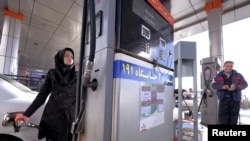Based on the latest report on world gasoline prices, Iran has the cheapest fuel for cars, after Venezuela.
Global Petrol Prices has issued a list of gasoline prices around the world, which shows that one litre of gas in Iran costs just 27 cents, while in the United States, which has moderate prices compared with many other countries, one litre is 83 cents.
The average price in the world for 95 octane gasoline is $1.17 per litre, with Norway, Hong Kong and Iceland being above two dollars, as the most expensive places to drive a car.
But Venezuela is at the top of the list with gas available at just 1 cent per litre, while it suffers from astronomical inflation, poverty and a general economic breakdown.
Iran is also in the grips of serious economic trouble, but as an oil producing nation, it is beholden to public expectations of cheap fuel.
Traditionally, oil producing countries offer low-priced gasoline and other liquid fuels domestically, since usually that’s one of the main products they produce and offer it much like subsidized commodity to their people. But Iran’s story is a bit different since it does not have enough refining capacity and actually imports a good chunk of its gasoline.
According to Iranian official figures, the country imports more than 12 million litres of gasoline daily, which can fill up almost 300,000 passenger cars.
Cheap energy also leads to waste and inefficiencies. Turkey with a similar population in size has 2.5 times more GDP than Iran but uses almost half the energy. Gasoline in Turkey is five times more expensive than in Iran and its consumption much lower.
Offering cheap gasoline, electricity and other sources of energy puts a huge burden on government finances in Iran, to the tune of billions of dollars annually.
In 2016, Iran spent $16 billion to subsidize oil-based fuels and a further $18.7 to offer cheap electricity and natural gas. That in itself eats up a big portion of the country’s oil income in normal times. But with looming U.S. ban on Iranian oil, the burden on the government becomes a serious economic issue.
Inflation is also expected to accelerate in Iran, which has witnessed a downward spiral in the value of its currency, rial. While before the 1979 revolution one U.S. dollar bought just 70 rials on the open market, now it can fetch 10,000 rials.
This means that the average person in Iran still carries a heavy burden of paying for fuel, because purchasing power is fast decreasing. While Iran might be the second cheapest place in the world to fill up a car, people are getting poorer by the day as prices for everything else goes up.






